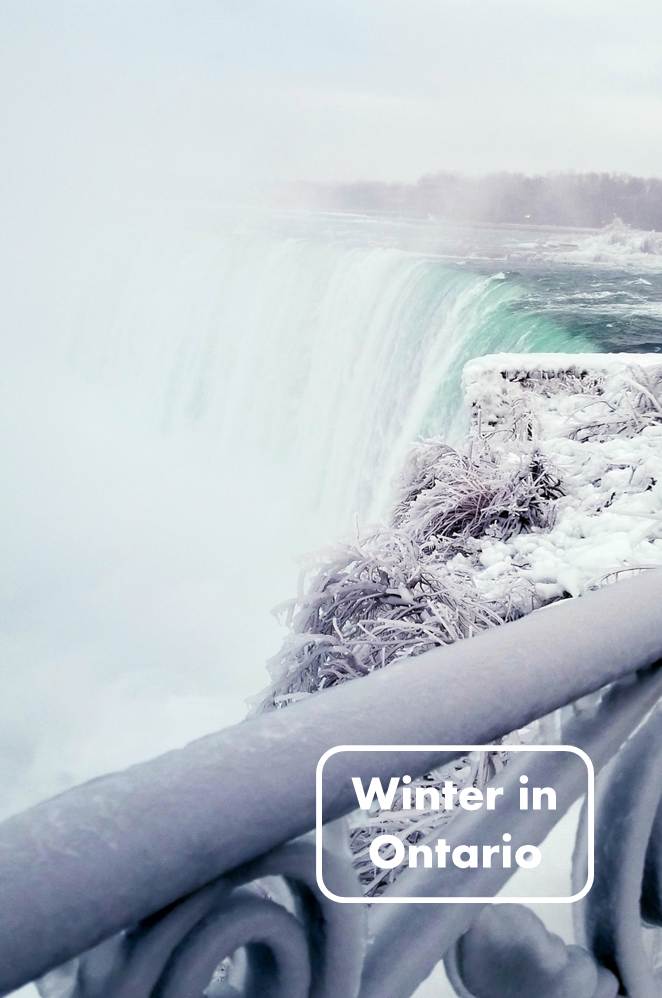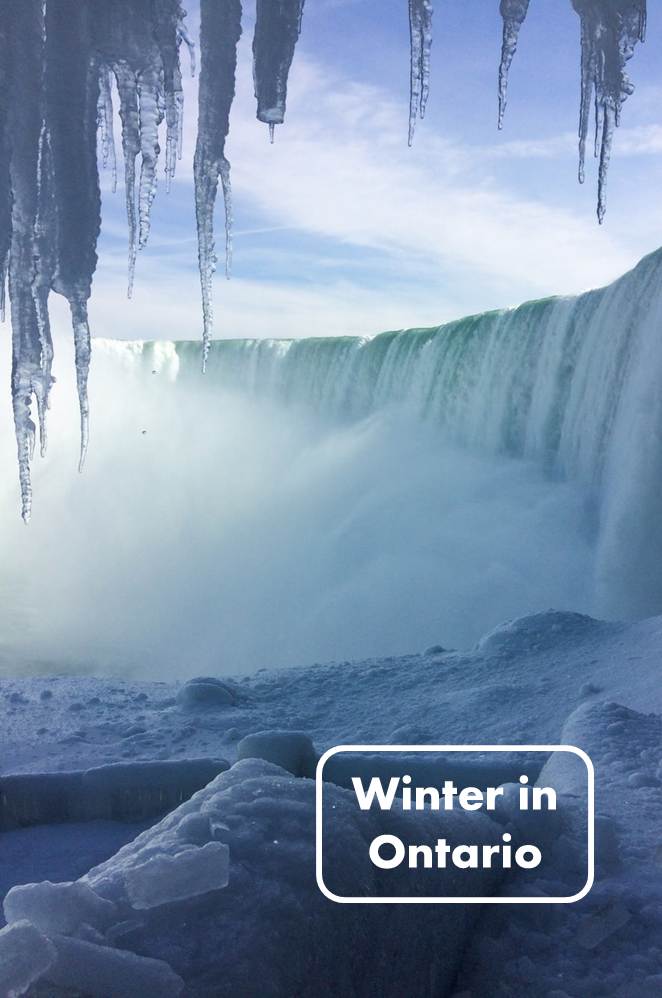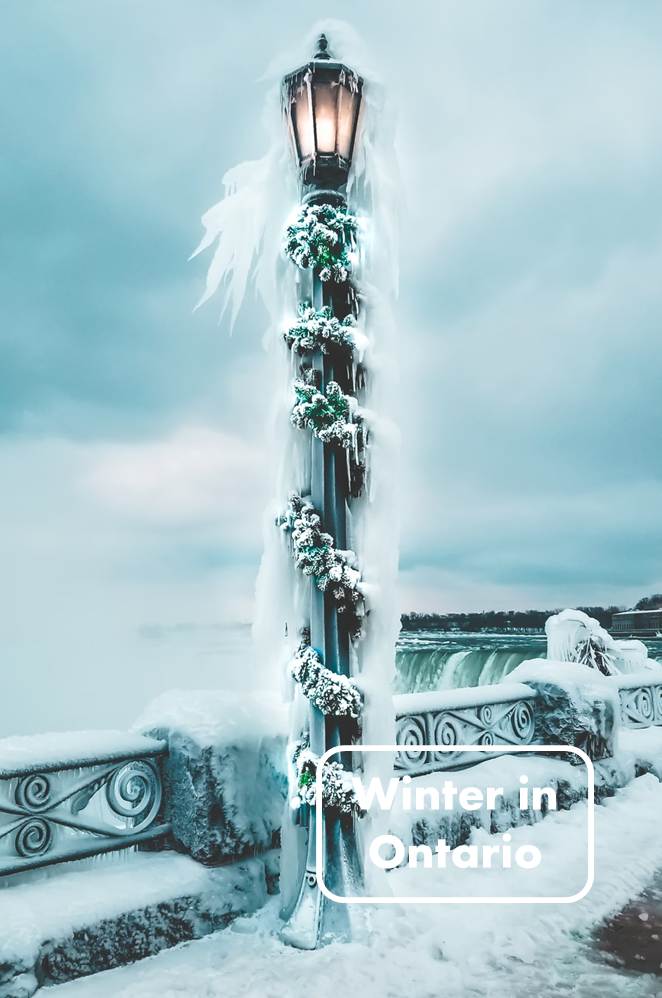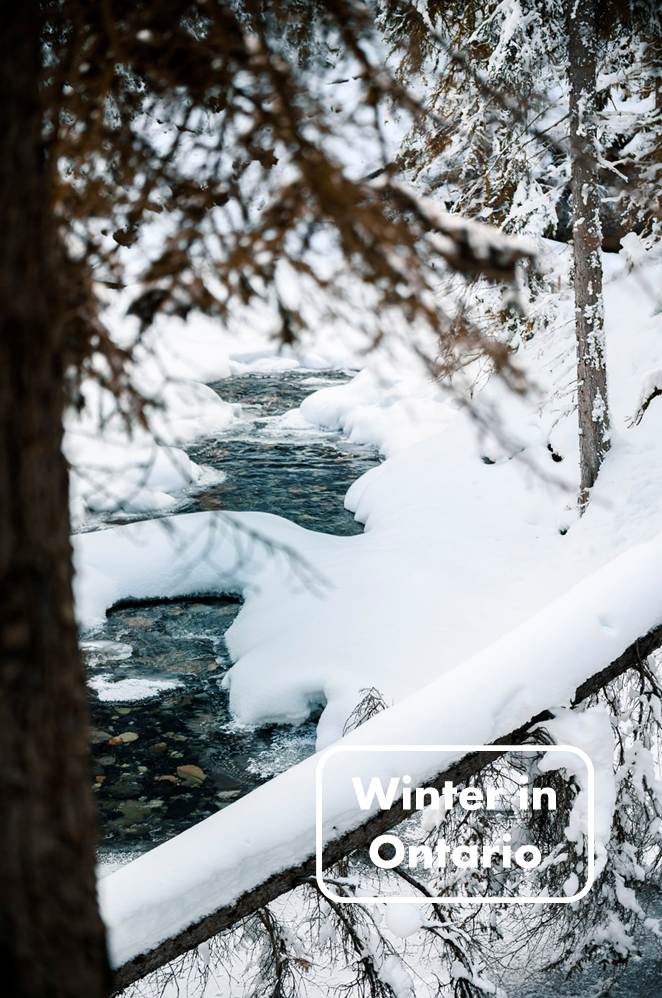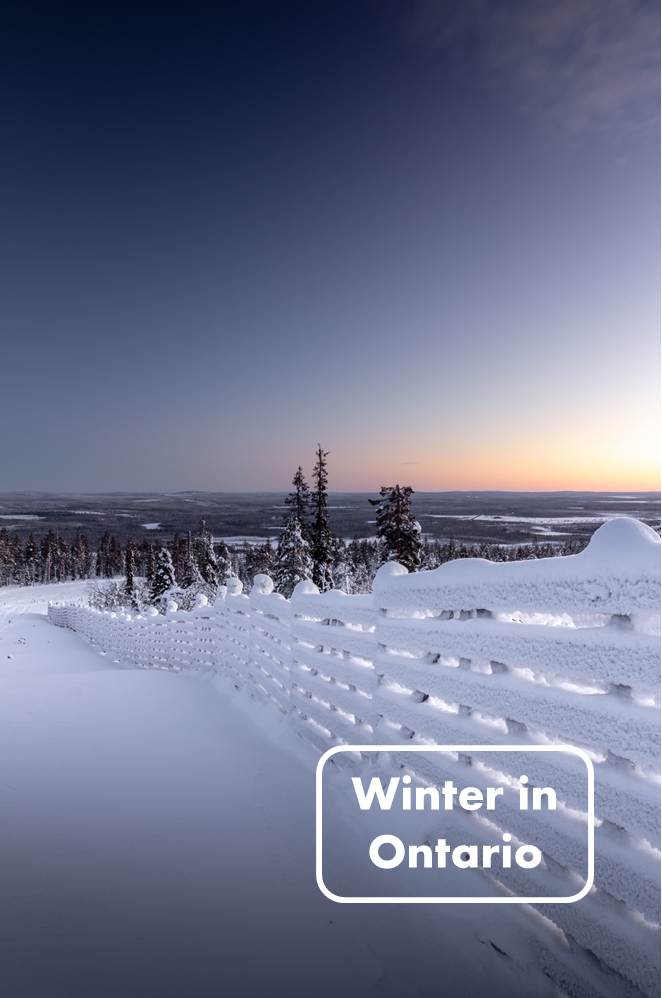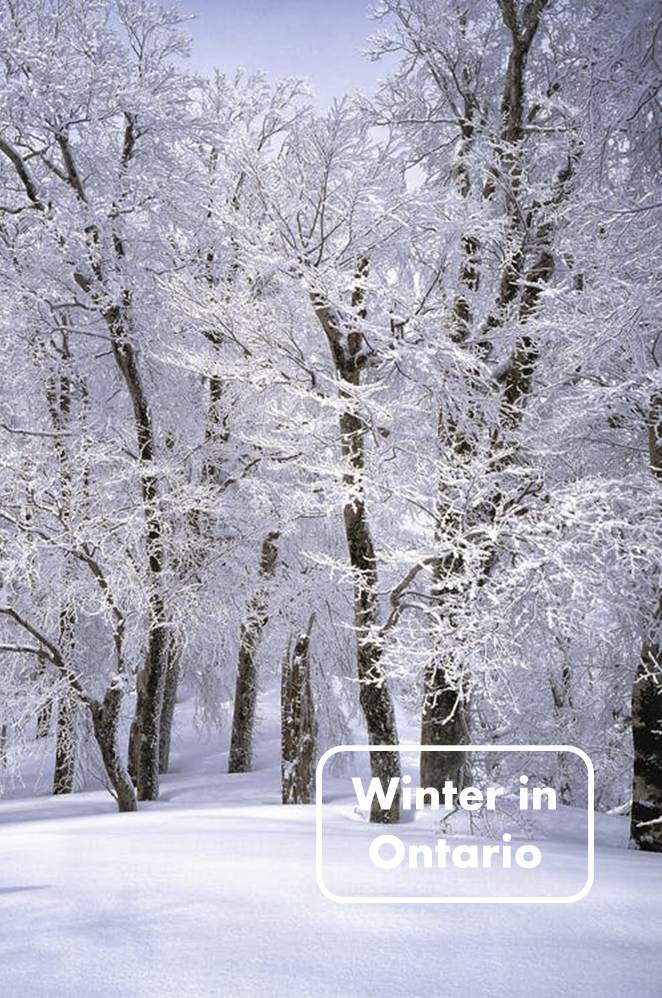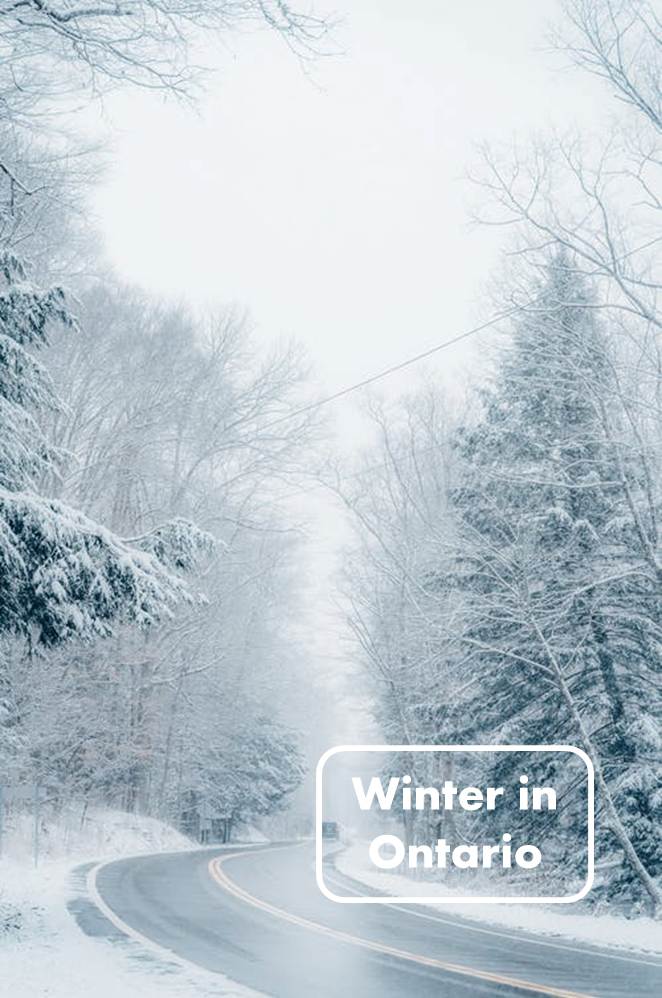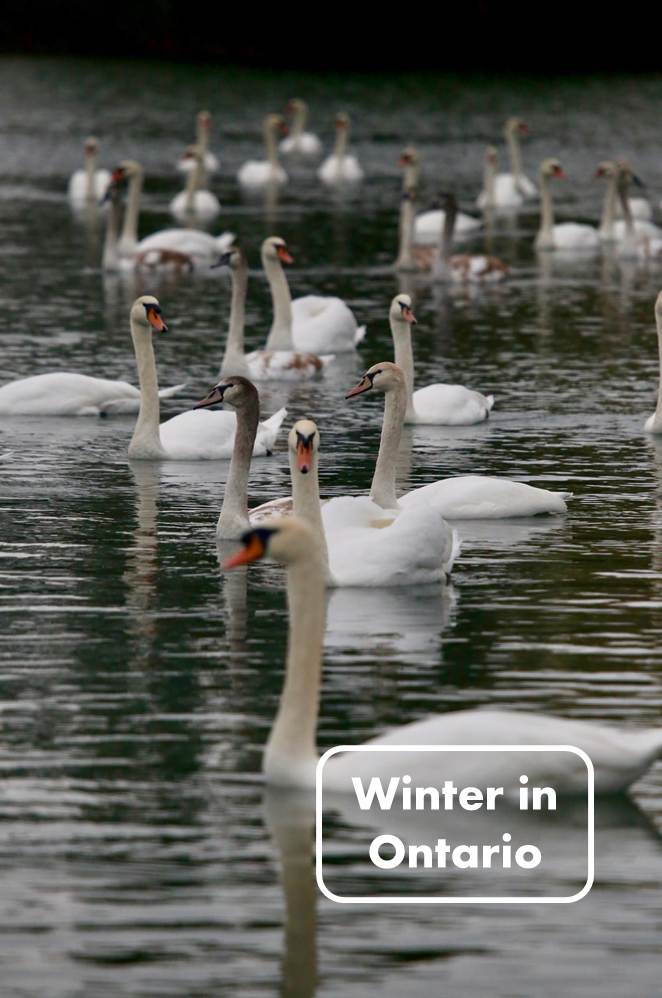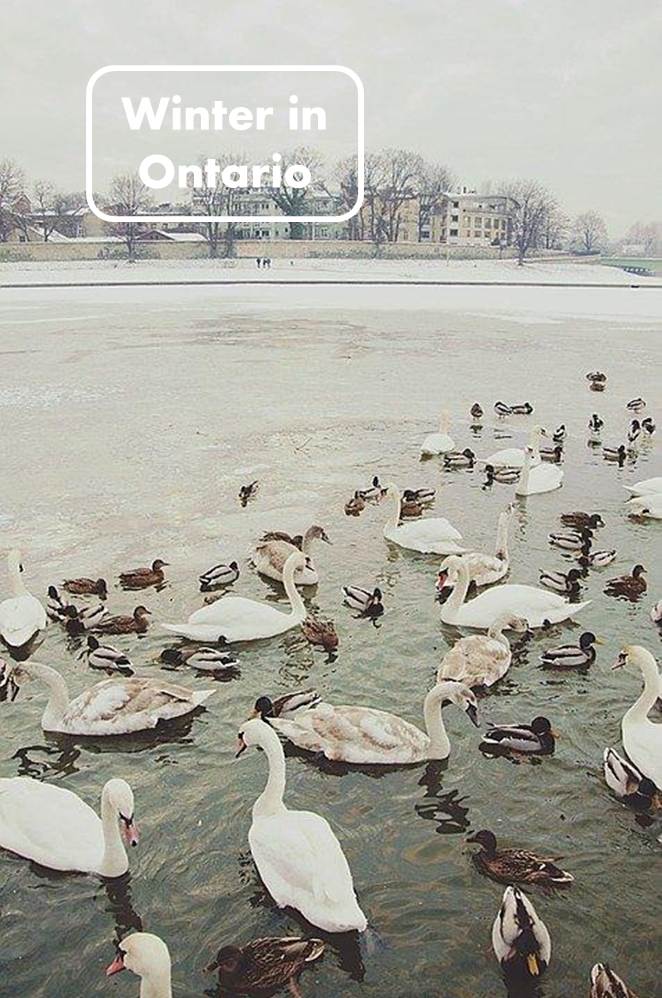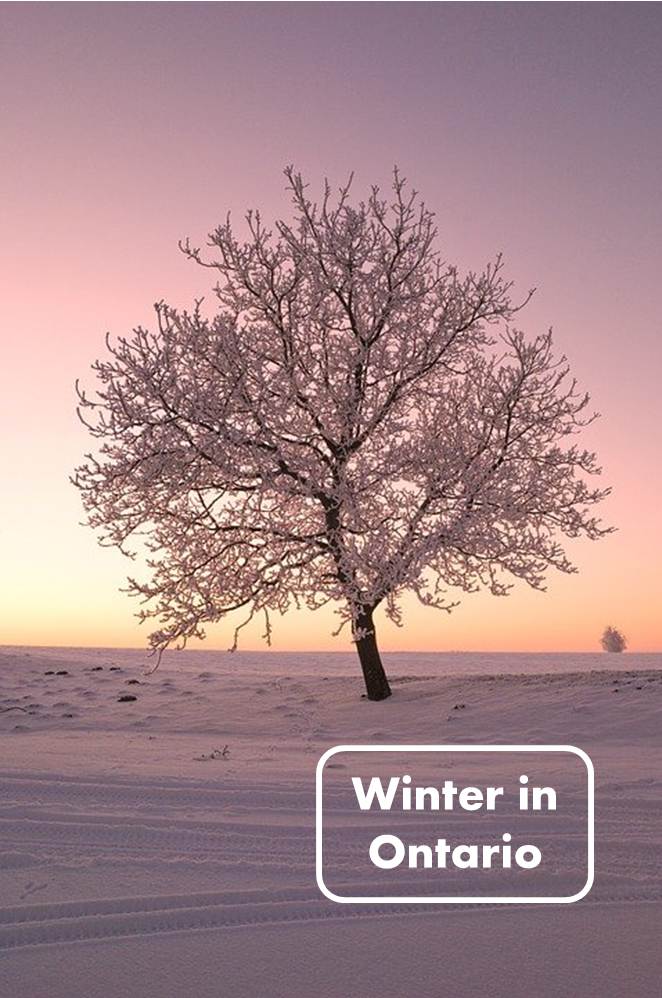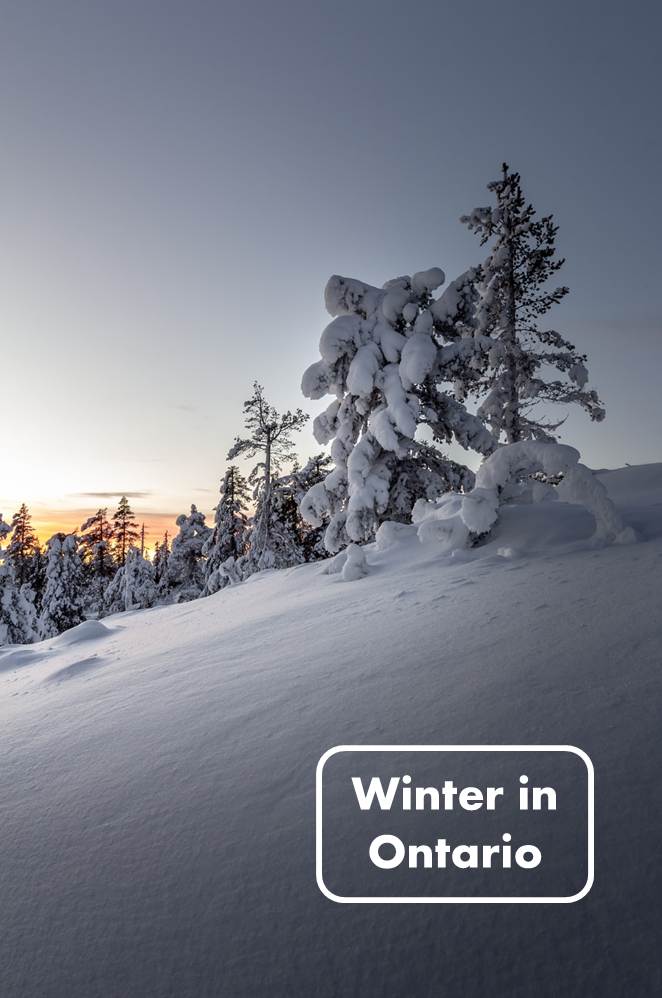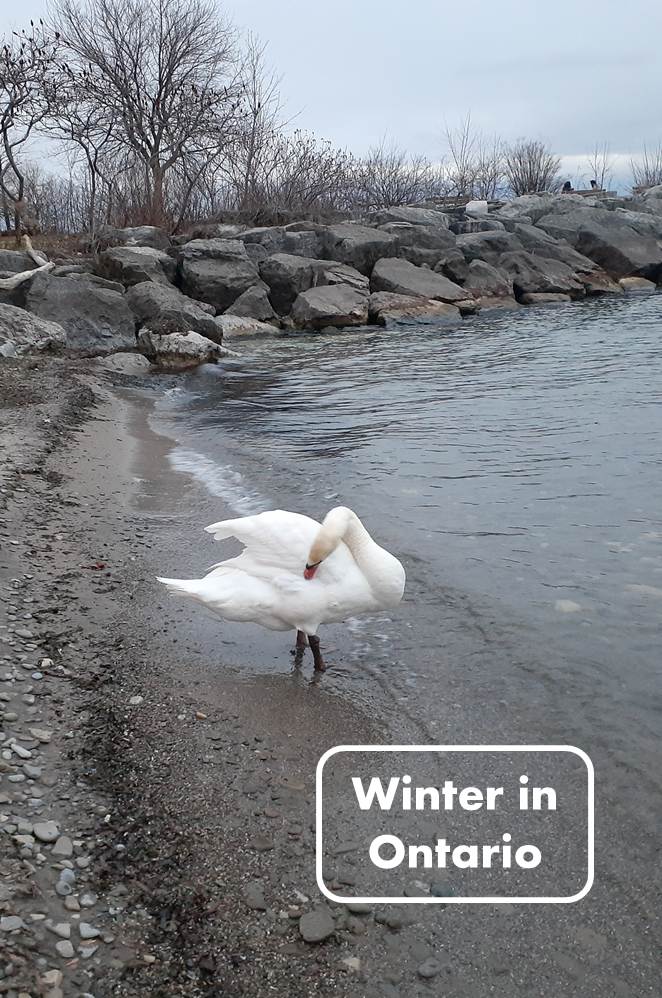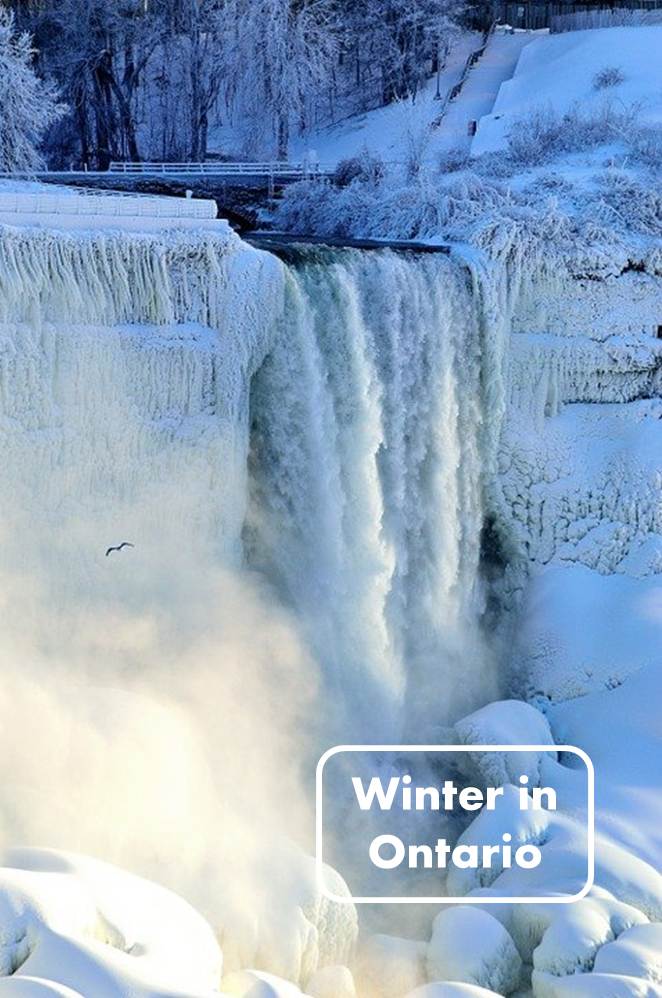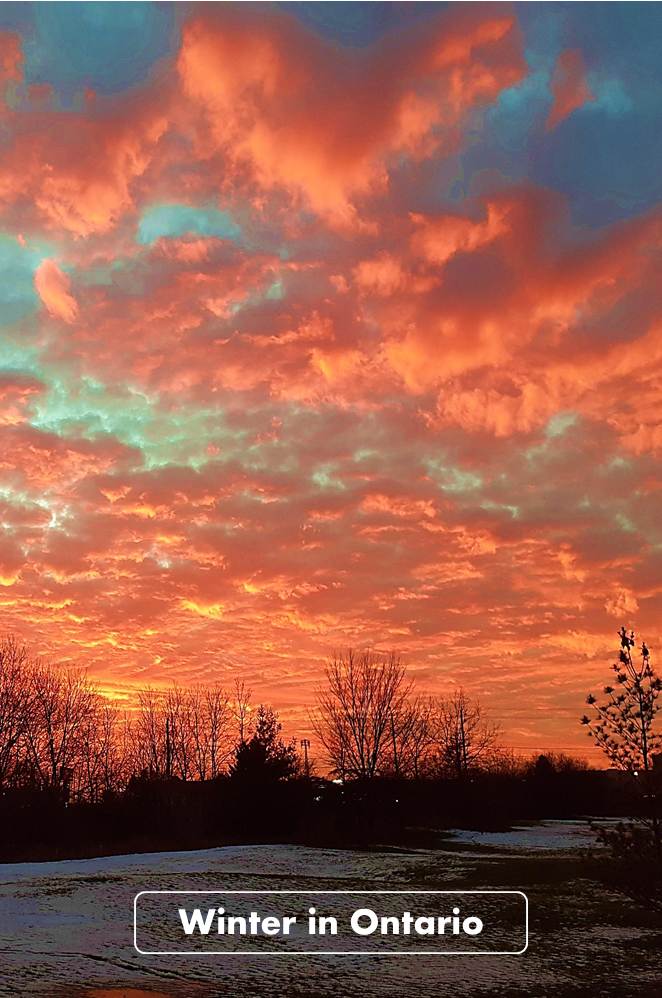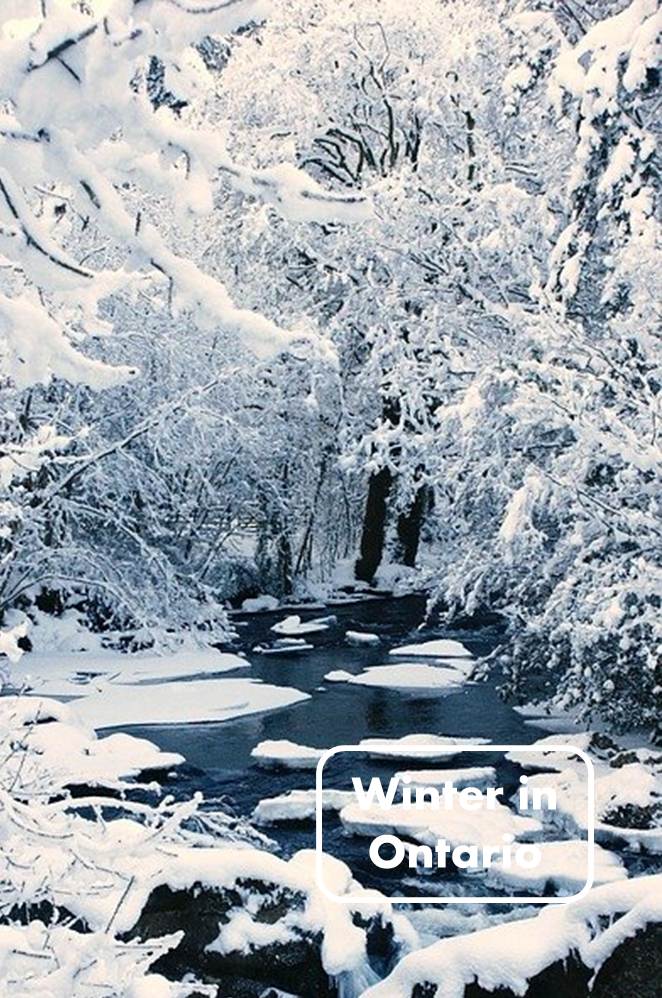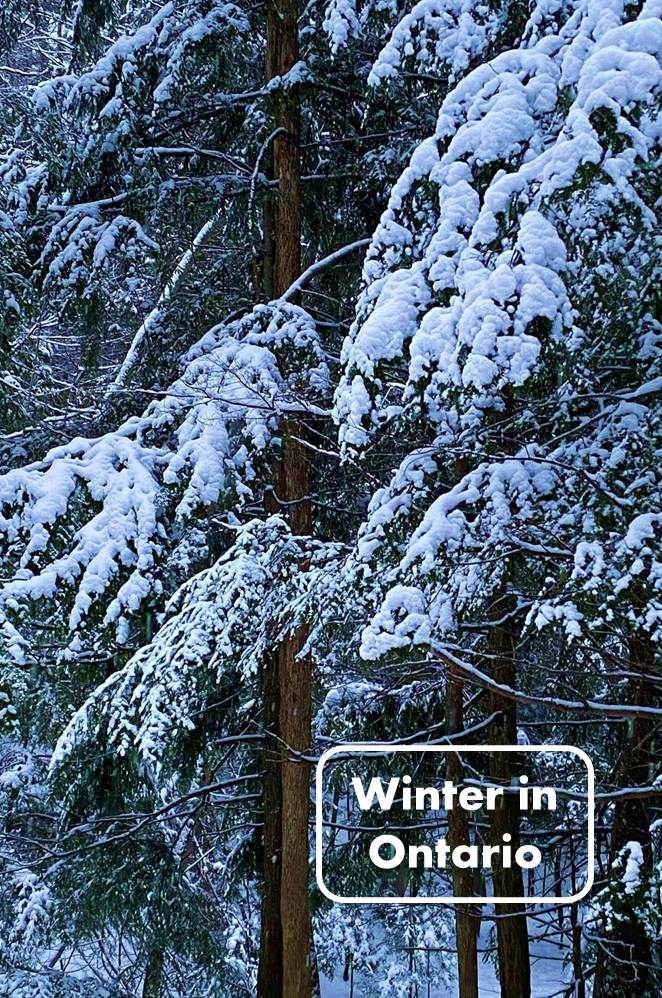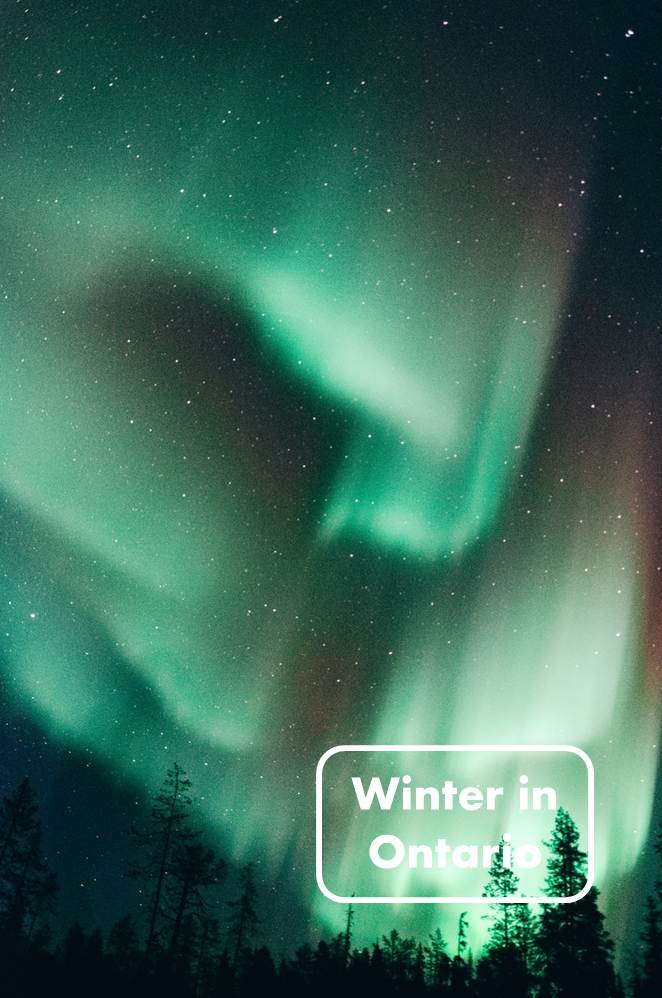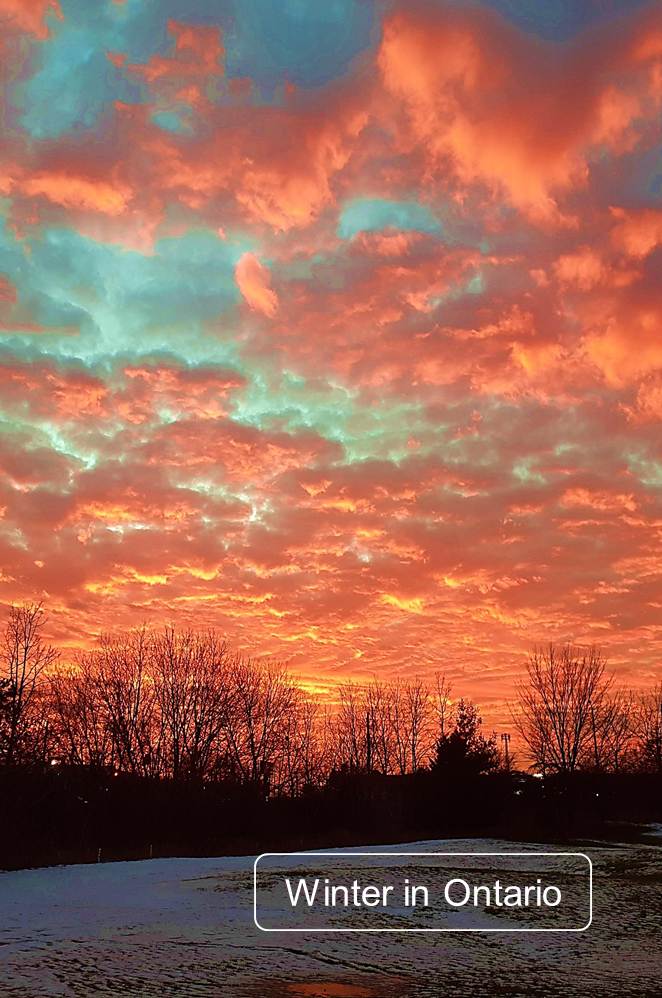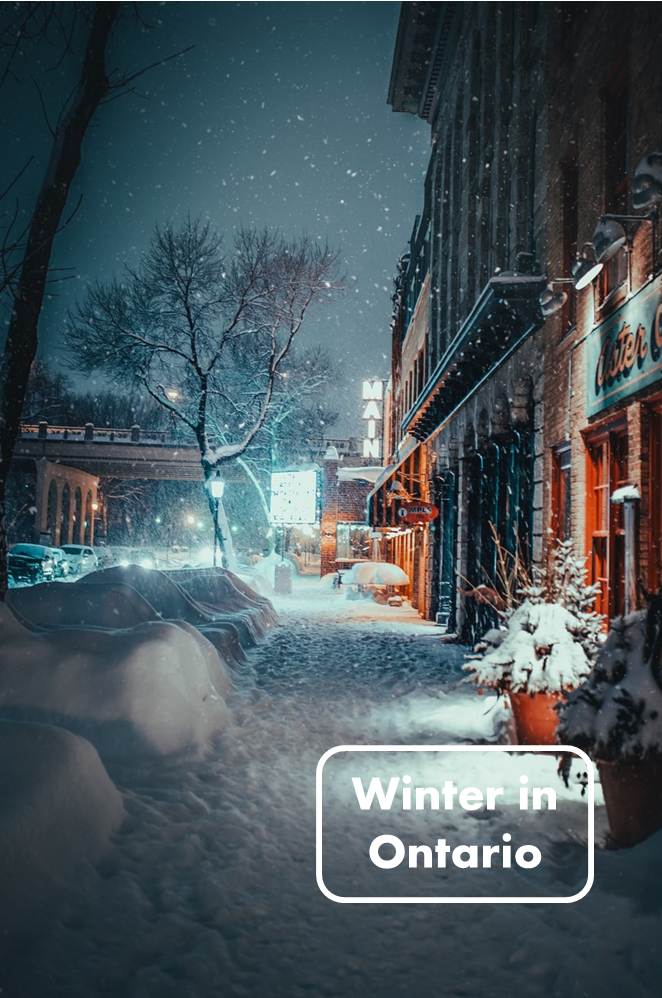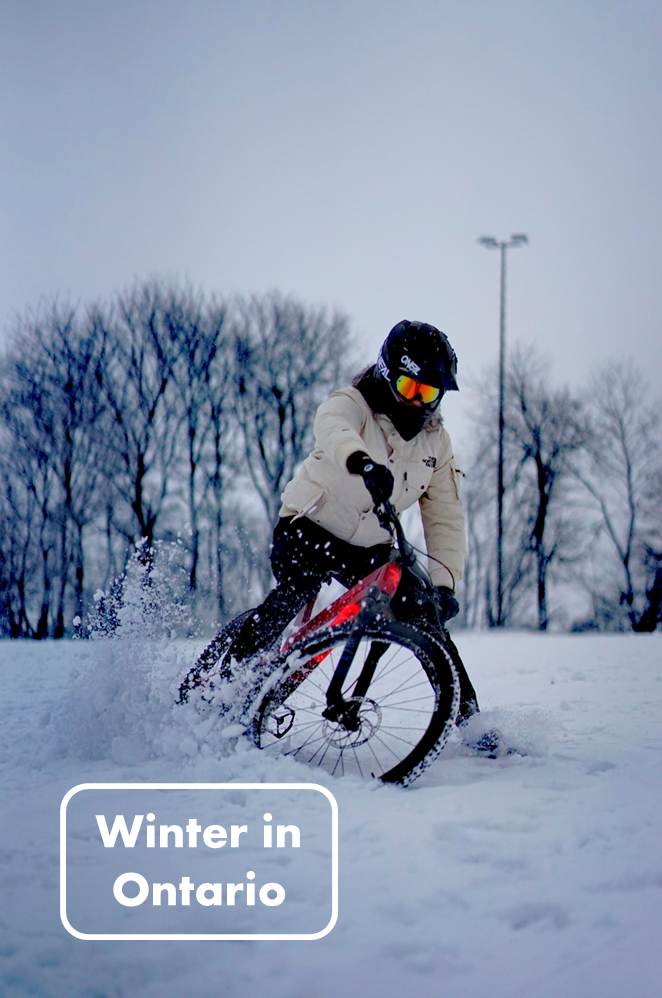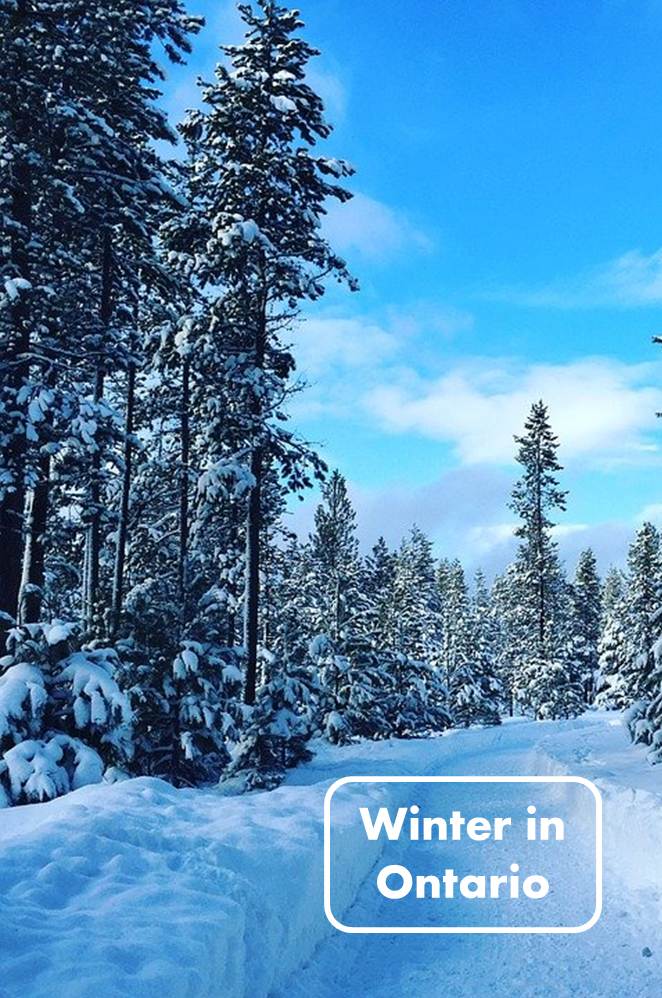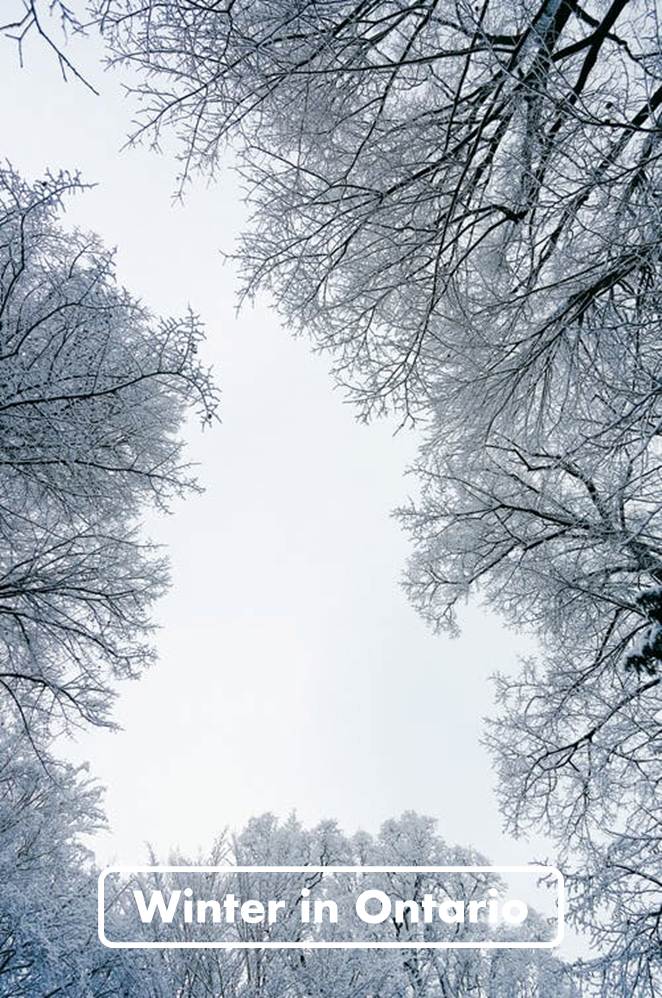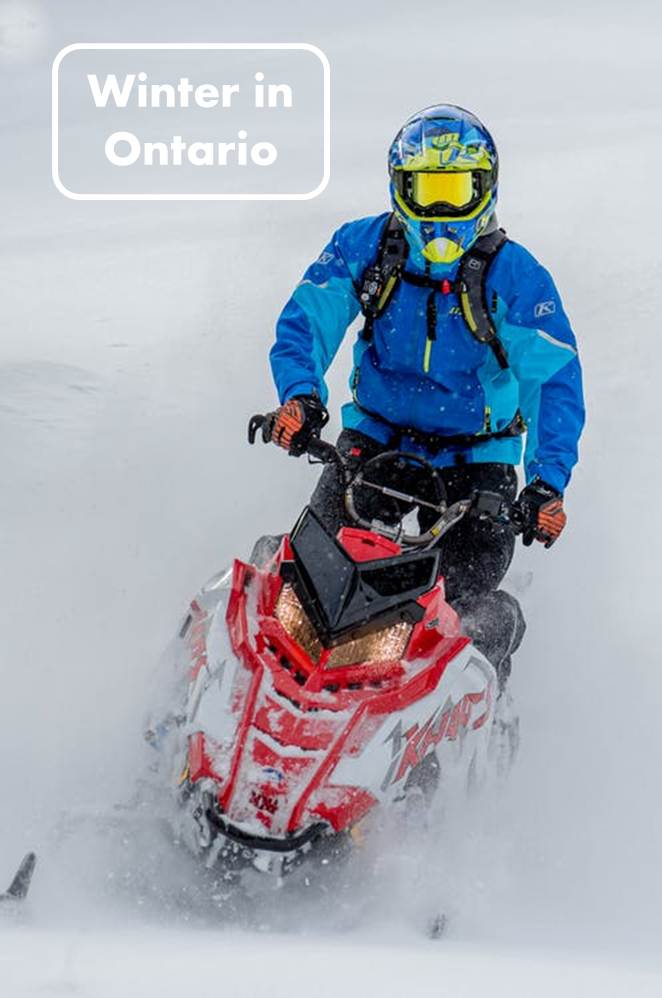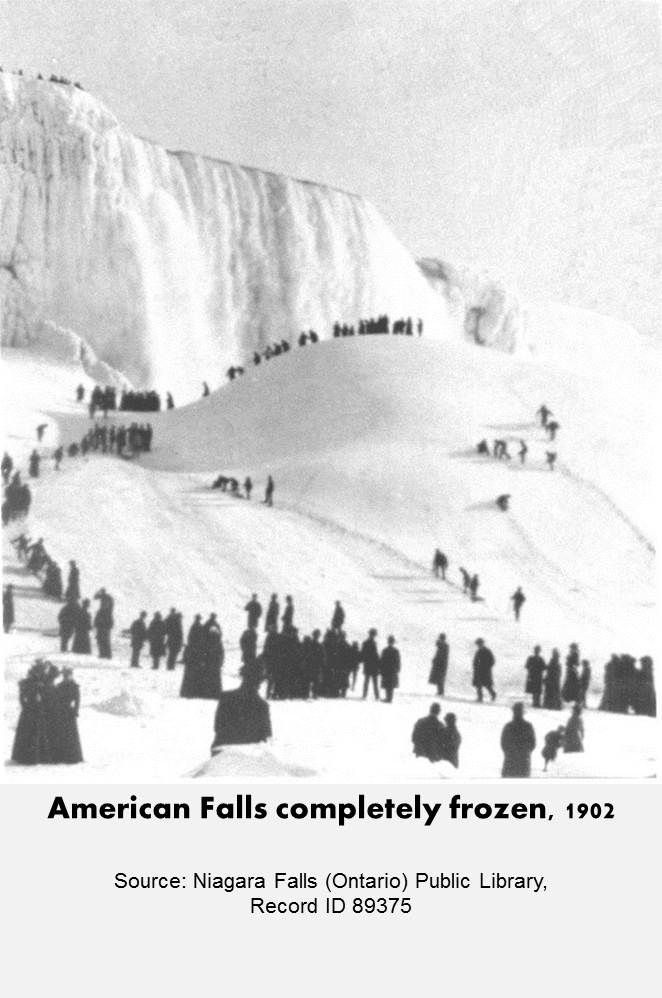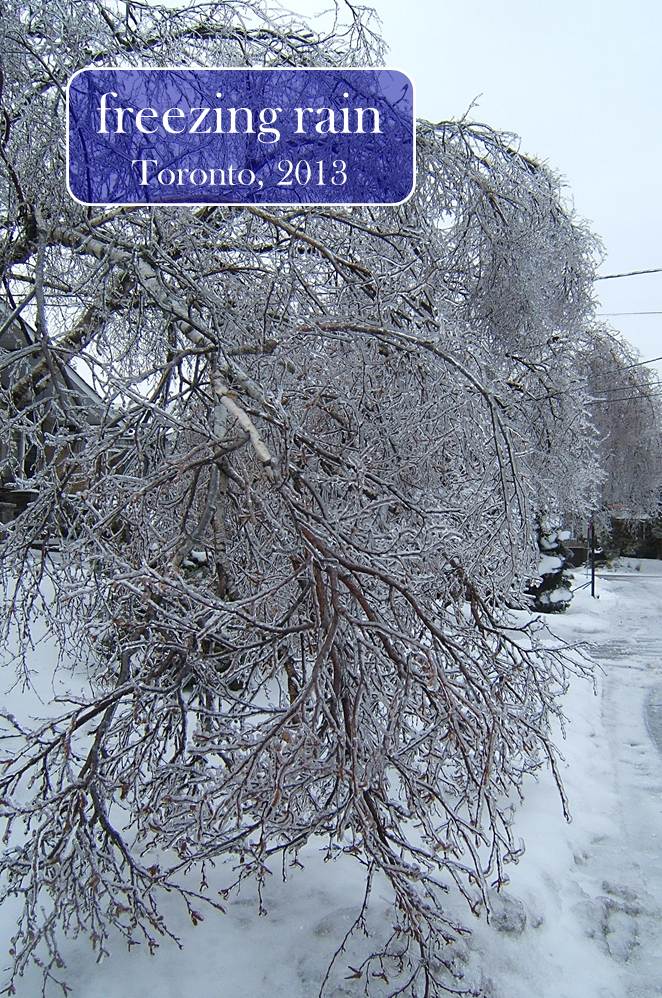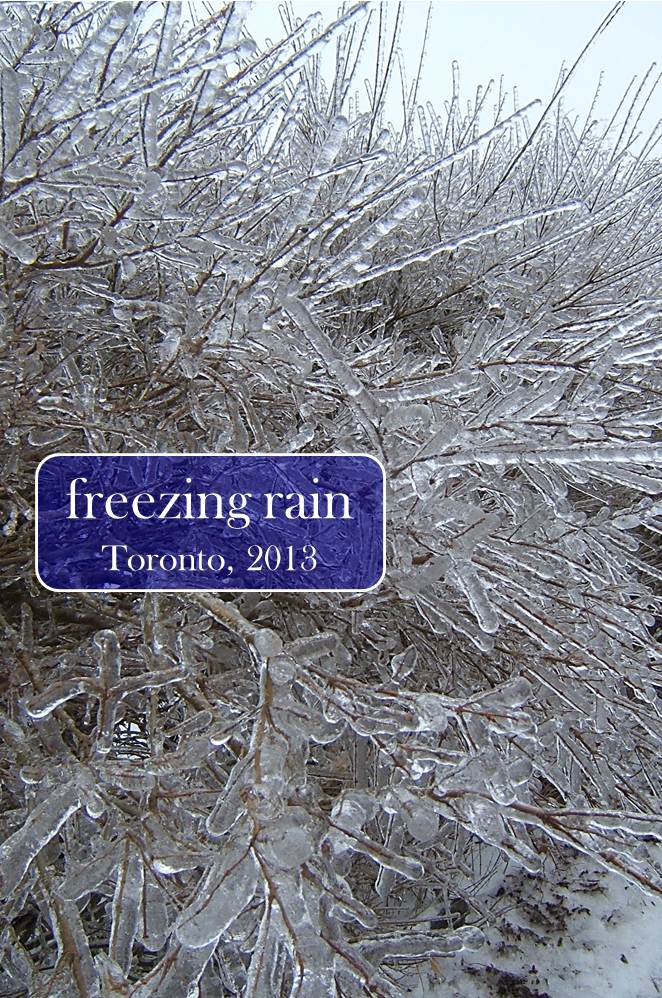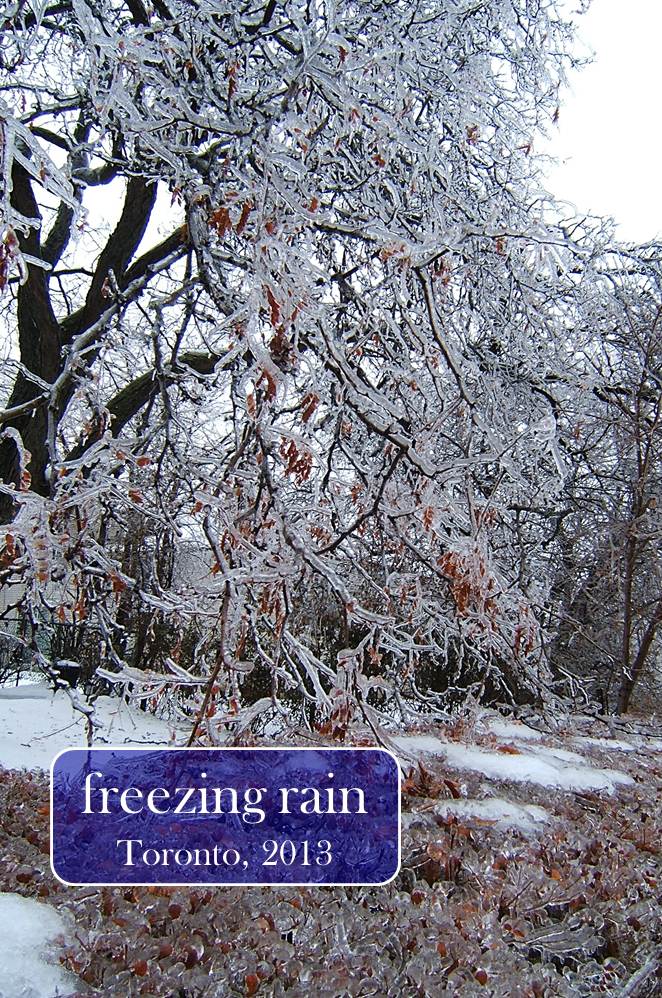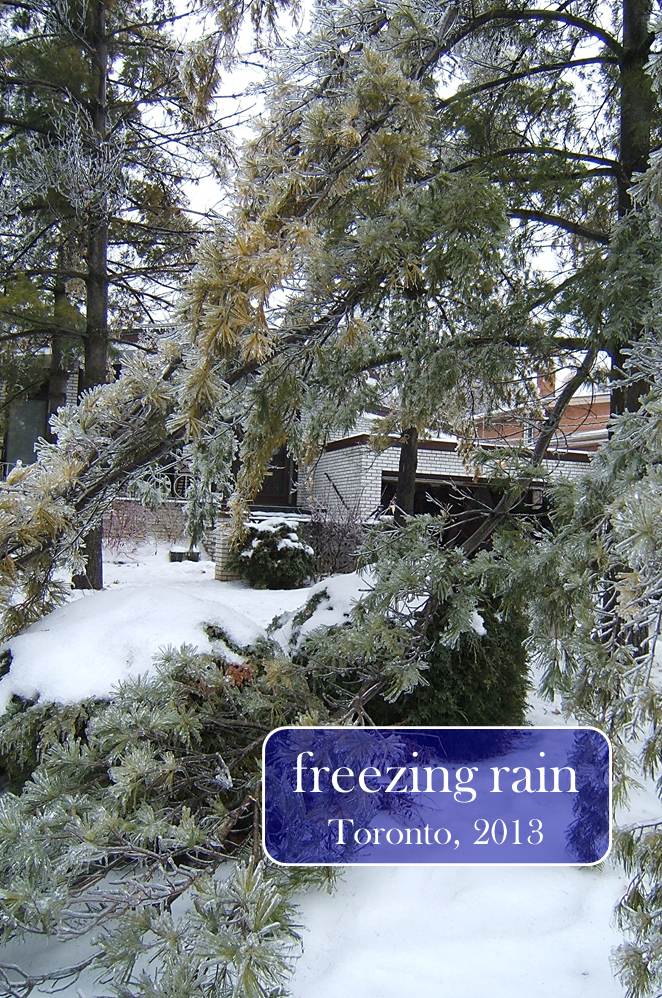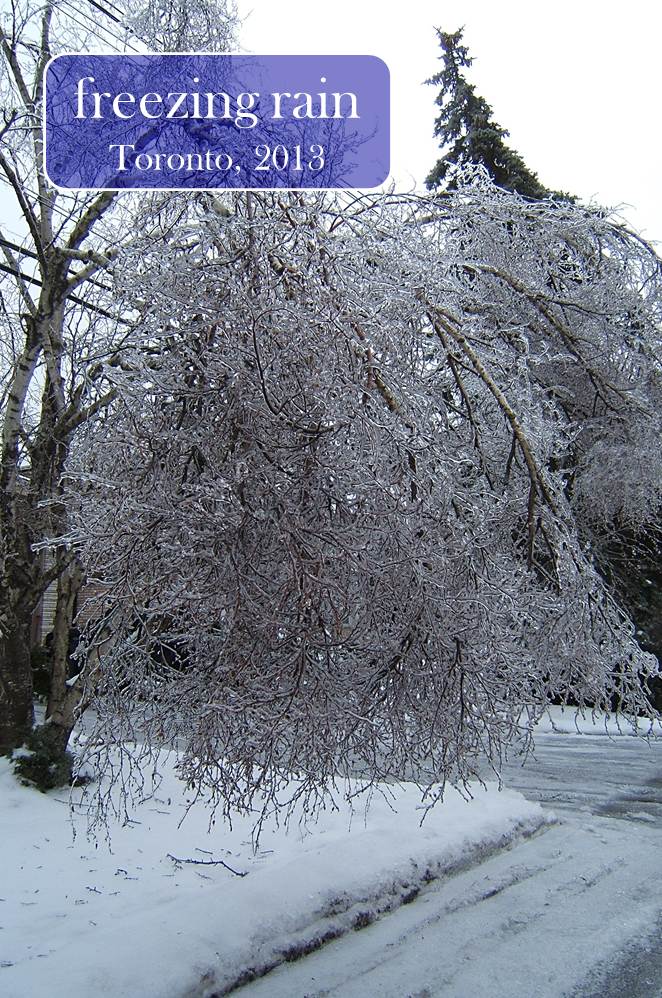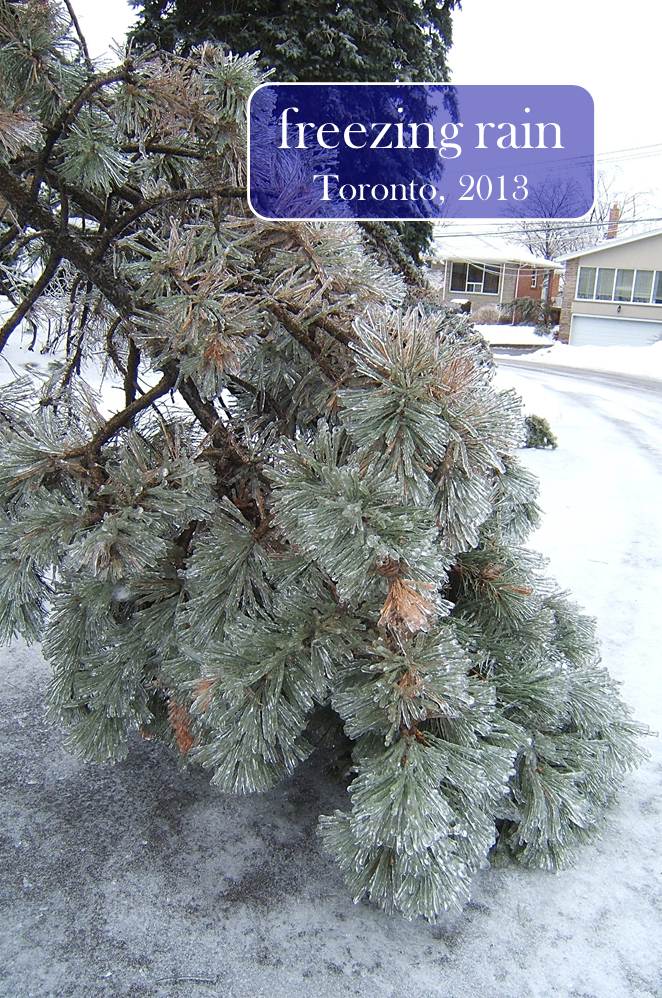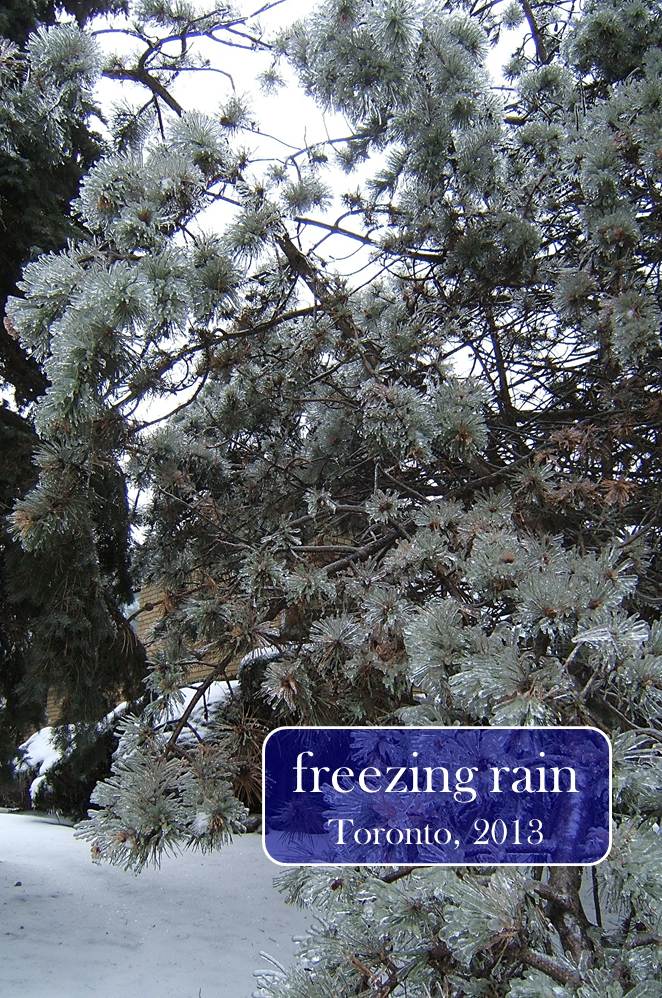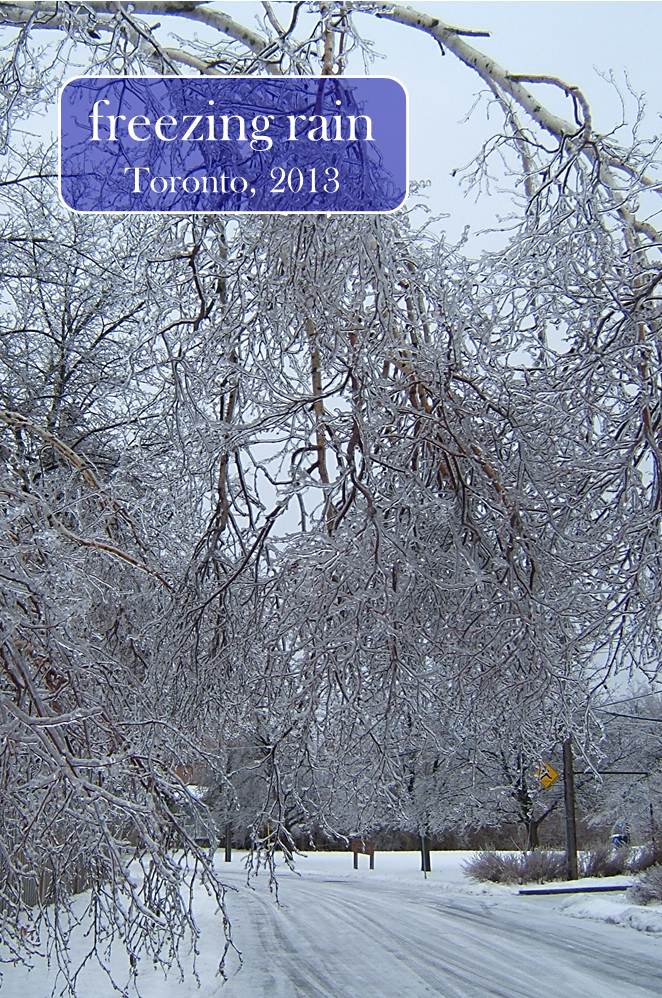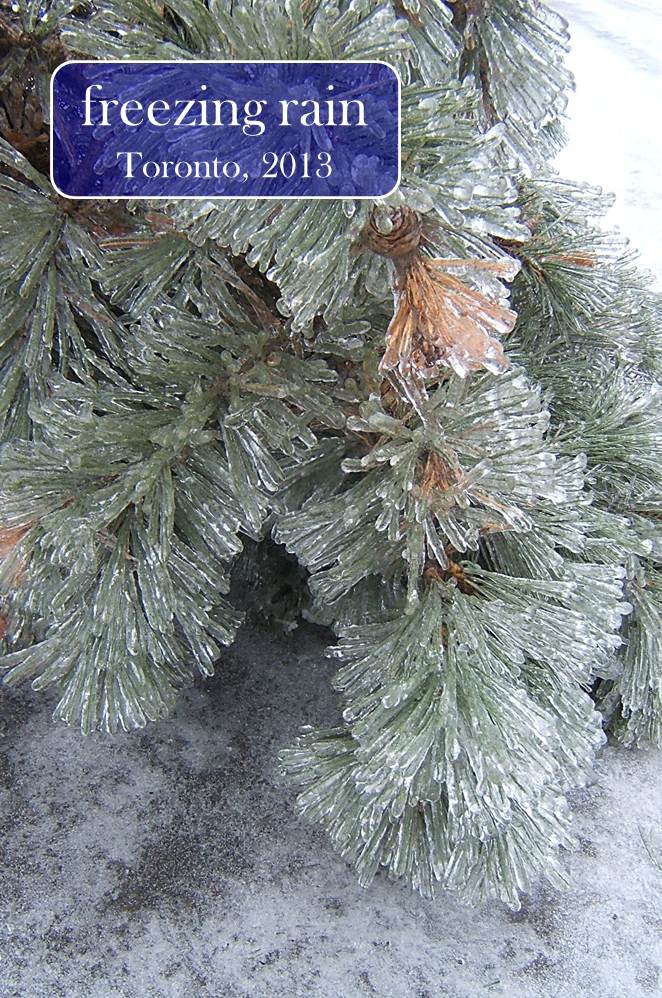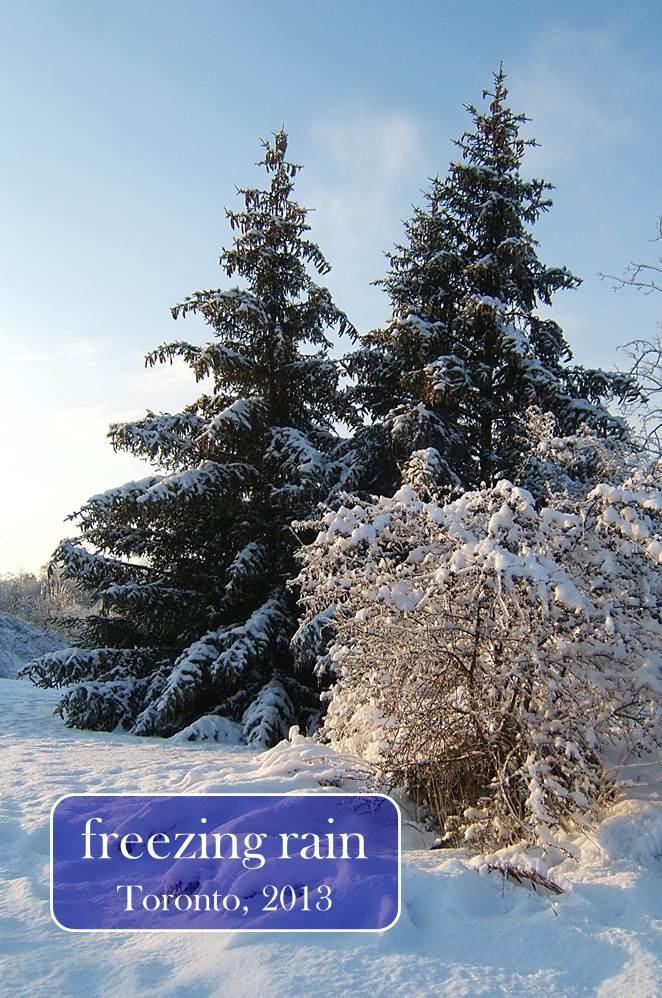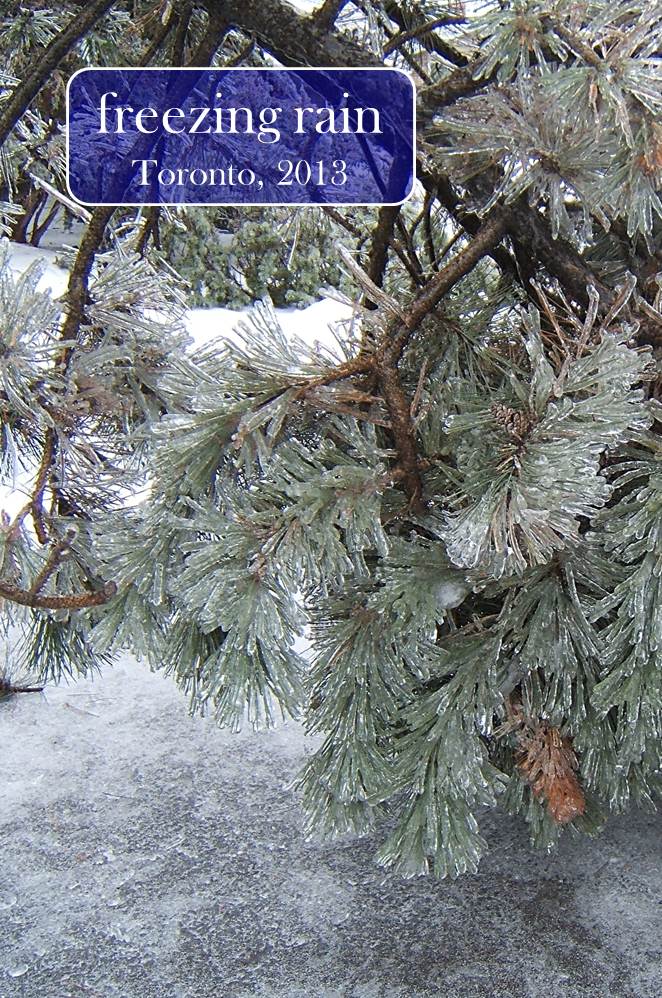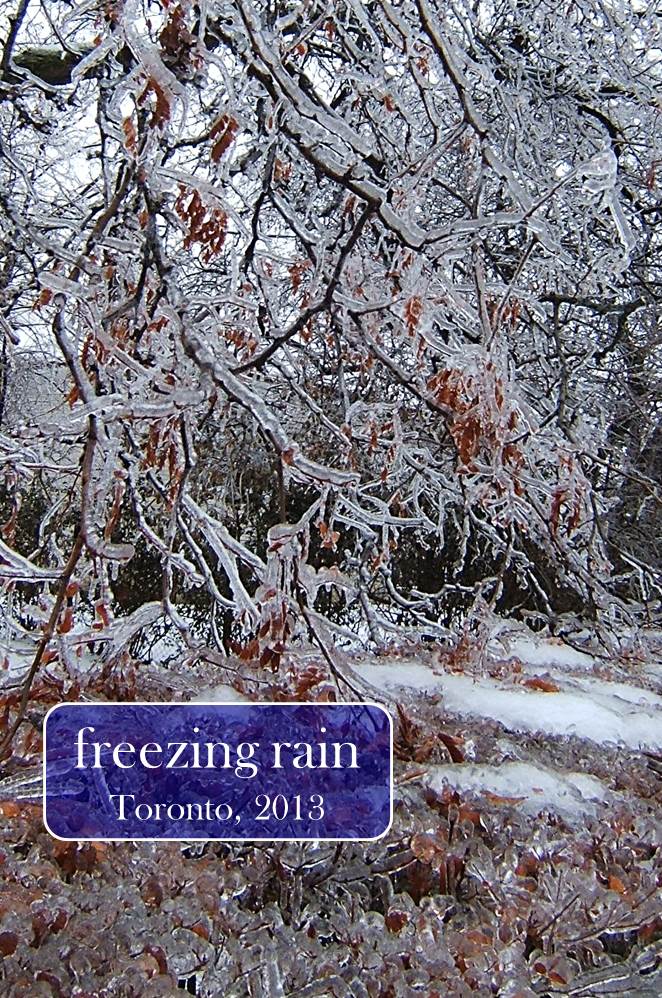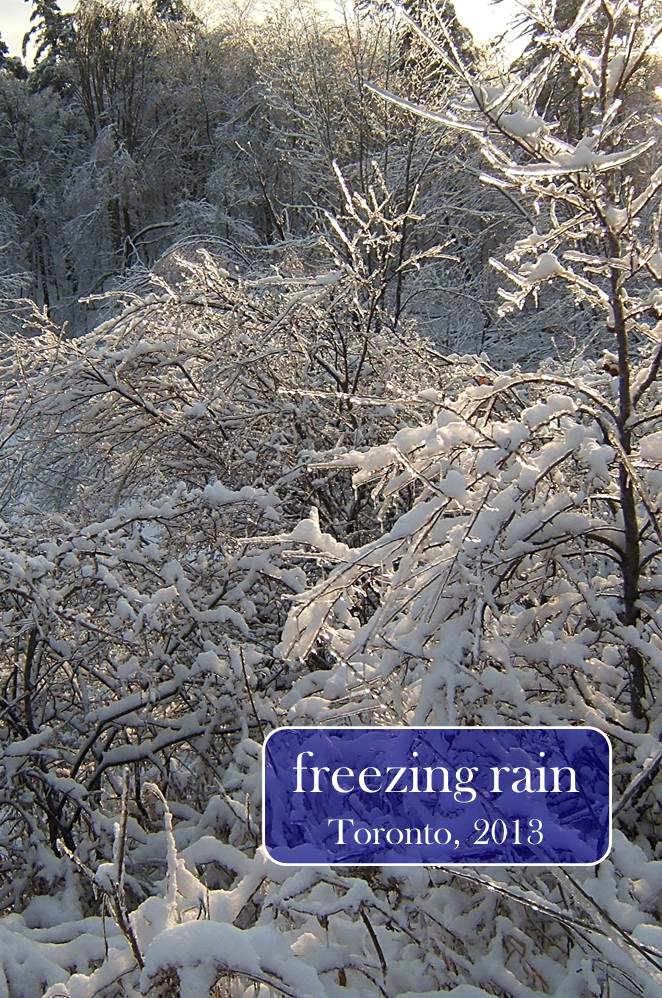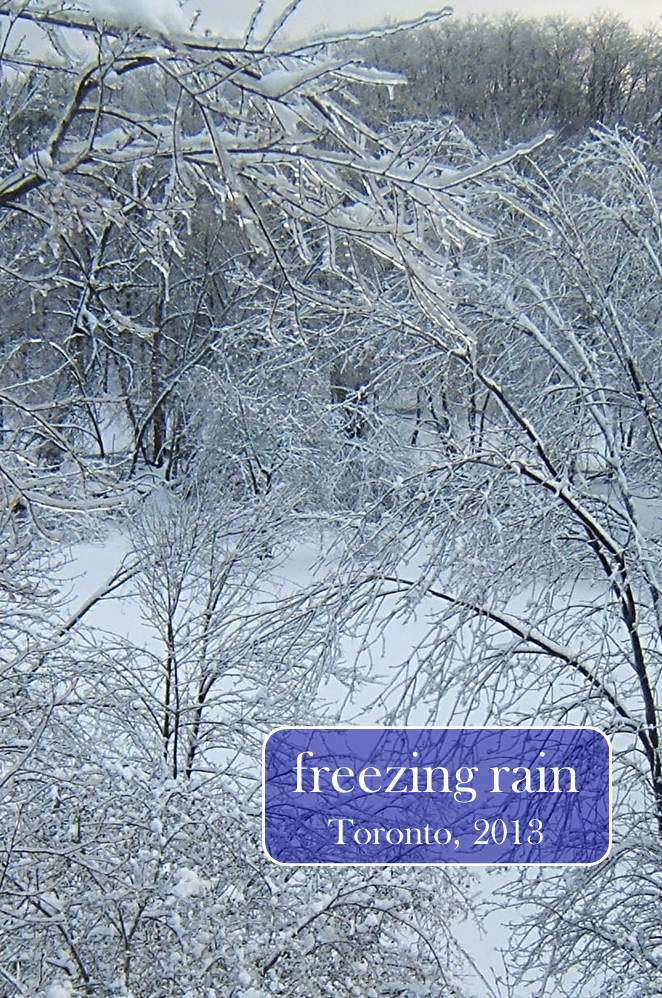Ontario is a huge Canadian province occupying 1,076,395 km2, the same area as Egypt or Bolivia. No wonder that it has a few climatic regions.
 Ontario’s winters
Ontario’s winters
The dominant factor that affects Ontario’s winter weather during the winter months, and for a longer part of the year in far northern Ontario, is cold, dry, arctic air from the north.
Lake-effect snow
The region of southern Ontario that is surrounded by the Great Lakes has a moderate humid continental climate with a big influence of the Great Lakes. Lake-effect snow is produced during cooler atmospheric conditions when a cold air mass moves across long expanses of warmer lake water. The lower layer of air, heated up by the lake water, picks up water vapour from the lake and rises up through the colder air above; the vapour then freezes and is deposited on the leeward (downwind) shores, which makes abundant snow. In December 2010, the snowbelt set a new record when it was hit by more than a metre of snow within 48 hours.
During the winter, the release of heat stored by the lakes moderates the climate near the shores. Many parts of Southwestern and Central Ontario get a large part of their winter snow from lake-effect snow. This region is notorious for the whiteouts which can suddenly reduce highway visibility on the world’s busiest highway (Ontario Highway 401) from clear to zero.
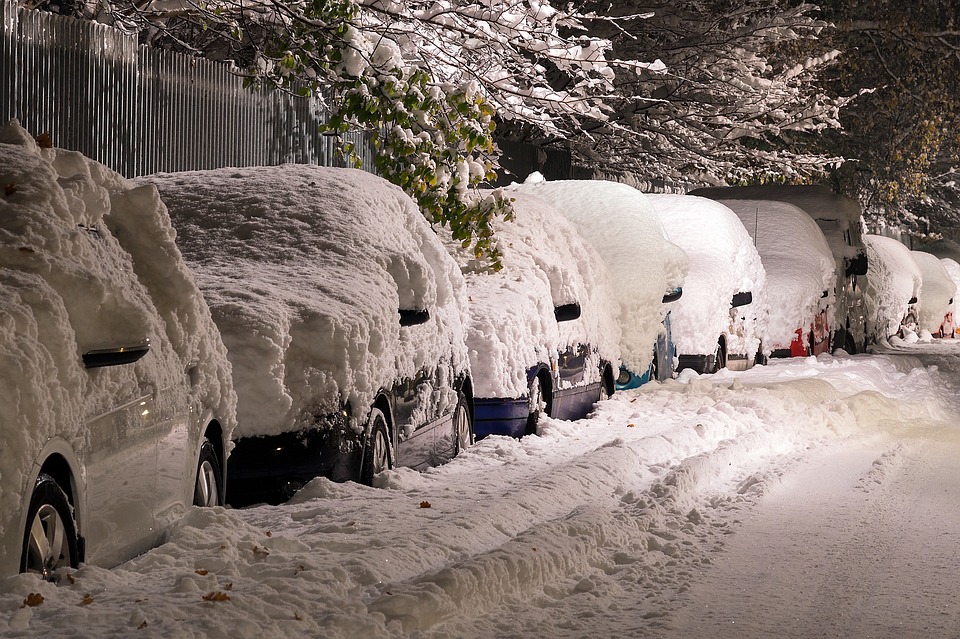
Freezing rain
Freezing rain is the name given to rain maintained at temperatures below freezing by the ambient air mass that causes freezing on contact with surfaces. Unlike a mixture of rain and snow, ice pellets, or hail, freezing rain is made entirely of liquid droplets. The raindrops become super-cooled while passing through a sub-freezing layer of air hundreds of meters above the ground, and then freeze upon impact with any surface they encounter, including the ground, trees, electrical wires, aircraft, and automobiles. The resulting ice, called glaze ice, can accumulate to a thickness of several centimeters and cover all exposed surfaces.
A storm that produces a significant thickness of glaze ice from freezing rain is often referred to as an ice storm. Although these storms are not particularly violent, freezing rain is notorious for causing travel problems on roadways, breaking tree limbs, and downing power lines from the weight of accumulating ice. It is also known for being extremely dangerous to aircraft since the ice can effectively ‘remould’ the shape of the airfoil and flight control surfaces.
Niagara Falls in winter
According to Wikipedia, the only recorded freeze-up of the river and falls was caused by an ice jam on March 29, 1848. No water (or at best a trickle) fell for as much as 40 hours. Waterwheels stopped, and mills and factories shut down for having no power. In 1912, American Falls was completely frozen, but the other two falls kept flowing. Although the falls commonly ice up most winters, the river and the falls do not freeze completely. The years 1885, 1902, 1906, 1911, 1932, 1936, 2014, 2017 and 2019 are noted for partial freezing of the falls. A so-called ice bridge was common in certain years at the base of the falls and was used by people who wanted to cross the river before bridges had been built. During some winters, the ice sheet was as thick as 40 feet (12m) to 100 feet (30m), but that thickness has not occurred since 1954. The ice bridge of 1841 was said to be at least 100 feet thick. On February 12, 1912, the ice bridge which had formed on January 15 began breaking up while people were still on it. Many escaped, but three died during the event, later named the Ice Bridge Tragedy.
Ontario’s swans in winter
Do swans migrate?
Yes and no.
- In the winter, natural populations of trumpeter swans migrate to the southern tier of Canada, the eastern part of the northwest states in the United States, especially to the Red Rock Lakes area of Montana, the north Puget Sound region of northwest Washington state. Historically, they ranged as far south as Texas and southern California. They fly in V-shaped flocks.
- Introduced populations are mostly non-migratory. Non-migratory trumpeter swans have been artificially introduced to some areas where they never originally occurred.
What do swans eat in winter?
In winter, trumpeter swans may eat crop remnants in agricultural fields, but more commonly they feed while swimming. In winter, they may also eat grasses and grains in fields. They will often feed at night as well as by day. Feeding activity, and the birds’ weights, often peaks in the spring as they prepare for the breeding season.
How long do swans live?
In captivity, members of this species have survived to 33 years old and, in the wild, have lived to at least 24 years. Young trumpeter swans may have as little as 40% chance of survival due variously to disturbance and destruction by humans, predation, nest flooding, and starvation. In some areas, though, the breeding success rate is considerably greater and, occasionally, all cygnets may reach maturity. Mortality in adults is quite low, with the survival rate usually being 80–100% annually, unless they are hunted by humans.
Do trumpeter swans mate for life?
Like other swans, trumpeter swans often mate for life, and both parents participate in raising their young, but primarily the female incubates the eggs. Most pair bonds are formed when swans are 5 to 7 years old, although some pairs do not form until they are nearly 20 years old. “Divorces” have been known between birds, in which case the mates will be serially monogamous, with mates in differing breeding seasons. Occasionally, if his mate dies, a male trumpeter swan may not pair again for the rest of his life.
What are trumpeters swans nesting places?
Their breeding habitat is large shallow ponds, undisturbed lakes, pristine wetlands and wide slow rivers, and marshes. Most egg laying occurs between late April and May. The female lays 3–12 eggs, with 4 to 6 being average, in a mound of plant material on a small island, a beaver or muskrat lodge, or a floating platform on a clump of emergent vegetation.
